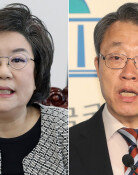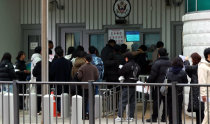Story of Baektap
While Seoul Tower takes the center stage in Seoul today, Baektap stood tall during the mid-18th Century of the Joseon Dynasty. Baektap refers to the 10-story Wongaksaji Pagoda (National Treasure No. 2) at Tapgol Park in Jongno 3-ga, Seoul. King Sejo, who acceded to the throne after killing King Danjong, converted to Buddhism, and constructed Wongak temple. The 10-story pagoda that was built at the time is called "baektap" (white pagoda), because it was made of marble in lieu of granite, a rarity in Korea. Baektap stood tall at the center of Seoul during the Joseon Dynasty, when there were no high-rise buildings, serving as a landmark of the capital city.
In the late 18th Century when King Jeongjo was in power, a group of young scholars would live at the central district of the capital, which was fast transforming due to development of commerce and industry. They included Park Ji-won, Yoo Deuk-gong, and Seo Sang-soo who were residing in Tapgol around Baektap, and Hong Dae-yong, Park Je-ga and Baek Dong-soo, who were living at the hill of Namsan. Despite extreme poverty that forced them to skip meals day after day, they frequently moved back and forth Supyo bridge linking southern and northern sections of Hanyang (Seoul), and built friendship, overcoming their social class as concubines sons as well as age differences. Just imagine Hong Dae-yong, a maestro of geomungo (traditional Korean musical instrument with six strings), is playing the instrument, while Lee Deok-moo is composing poems at the guest room at Seo Sang-soos home.
These people sought to see the world with new eyes and transform the country, going beyond simply exchanging taste for the arts. Those who are known as "Bukhakpa" among Shilhak (Realist School of Confucianism) scholars are none other than Baektap-pa. The story of "The Young People," who denied Seongrihak (Neo-Confucianism), which was Joseons mainstream school of thought, and instead sought to see the world with the aim of promoting public welfare some 200 years ago, is presented through the exhibition entitled The Story of Baektappa, the wind of change from Tapgol at the Seoul Museum of History.
It was King Jeongjo who recognized before others Baektappa, which was fledgling at a time when the Joseon Dynasty was regaining cultural self-confidence after overcoming damage from the wars of Imjinwaeran (Invasion of Japan) and Byeongjahoran (second Qing invasion of Korea). The king, who sought to keep at bay "noron" (a faction of Confucianism), the privileged group of the time, by introducing a new school of thought, employed many of the scholars through Gyujanggak, the royal library. Their thought, which was radical in the era, caused suspicion to King Jeongjo, who was their own sponsor. When the king suddenly died, they came to lose the opportunity to realize their dreams. In any era or society, young people, who are free from privileges, spearhead transformation. As young generations dream about transformation, take on challenge, and fail, history makes progress.



![화장실 갇혔을 때 생존법…“최후에는 변기뚜껑” [알쓸톡]](https://dimg.donga.com/c/138/175/90/1/wps/NEWS/IMAGE/2025/12/26/133042007.3.png)



